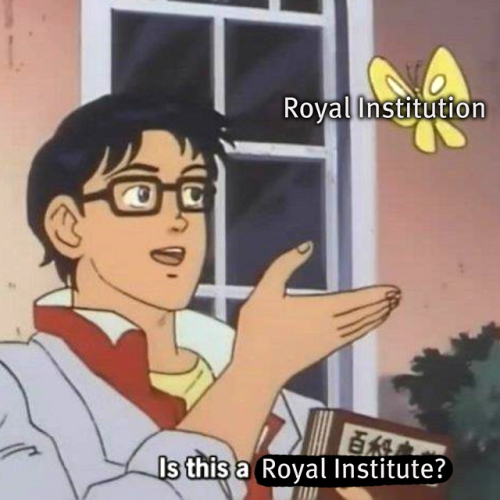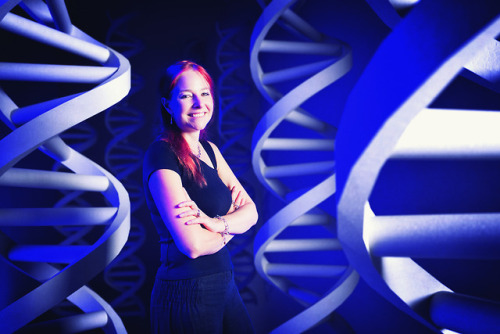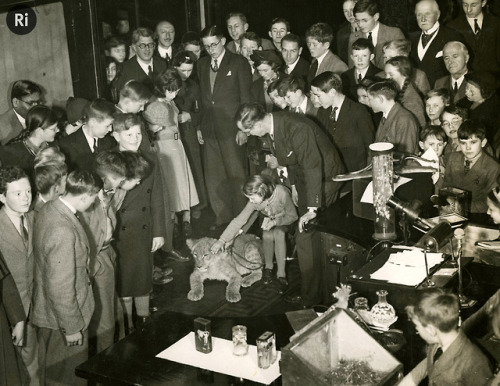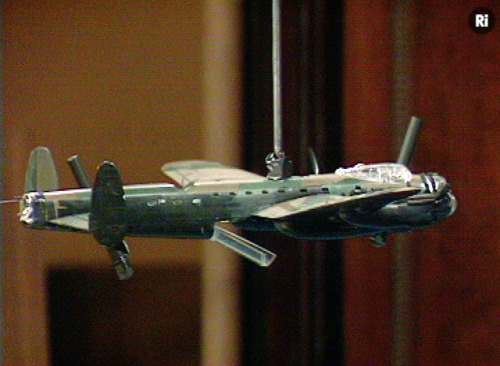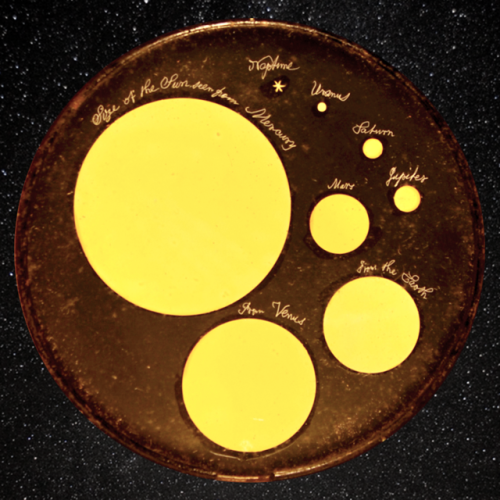#royal institution
Happy Chinese New Year!
Celebrate the #YearOfThePig with fireworks from our favourite human perpetual motion machine, Andrew Szydlo
This reaction is potassium chlorate + icing sugar reacting explosively with just 3 drops of sulphuric acid.
Icing sugar is a carbohydrate which gives the reaction energy, much like our own icing-fuelled sugar highs
‘On October 3rd, he asked me what day it is’
‘It’s Nobel Prize in Chemistry day’
Mean Girls Day meets the Nobel Prize on the best day of 2018 so far

Back in 1967 our former Director George Porter won the #NobelPrize in Chemistry for using lasers to study super fast chemical reactions ⚗️

In the 1950s, Porter had brought one of the first ruby lasers to the UK to develop his technique, Flash Photolysis

- First a strong flash of light from a laser excites a chemical’s molecules in a known quantity of a substance
- Then further flashes record how long it takes all excited molecules to return to their baseline state, by looking at the different proportions in the sample over time
Amazing to think how far we’ve come with laser technology in the last 60 years - especially looking at this year’s Nobel Prize in Physics winners! #pewpew

James Dewar was born #OnThisDay in 1842.
The Scottish chemist and physicist co-directed the Davy-Faraday Research Lab at the Ri from the end of the 19th Century. He is best known for inventing the Dewar flask aka vacuum flask aka Thermos.

Though he sadly didn’t profit from its widespread popularity, as he didn’t patent his invention before Thermos started using the design ()

Dewar’s flask aided his work into the liquefaction of then-so-called permanent gases like hydrogen and helium, as he could work at temperatures close to absolute zero ❄️

Whilst at the Ri he built machinery to yield high quantities of liquid oxygen, and showed that liquid oxygen and liquid ozone are attracted to the poles of a magnet
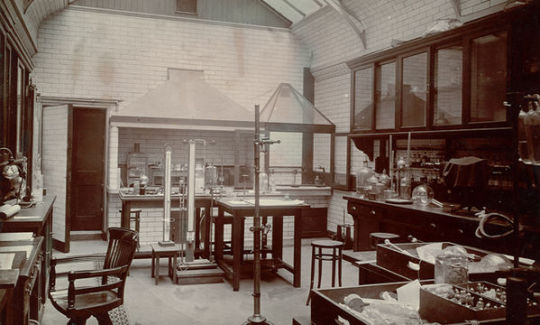
Watch our liquid oxygen magnetism demo here ➡ https://youtu.be/rz57PJToGEs

Dewar created liquid hydrogen for the first time in 1898, solid hydrogen in 1899, and he attempted to create liquid helium in the early 20th century
Click through an interactive version of this photo for a deeper look at his lecture on liquid hydrogen…

He also gave 9 series of Christmas Lectures for children! On topics ranging wide from ‘A Soap Bubble’ to 'The Story of a Meteorite’ to 'The Chemistry of Light and Photography’.
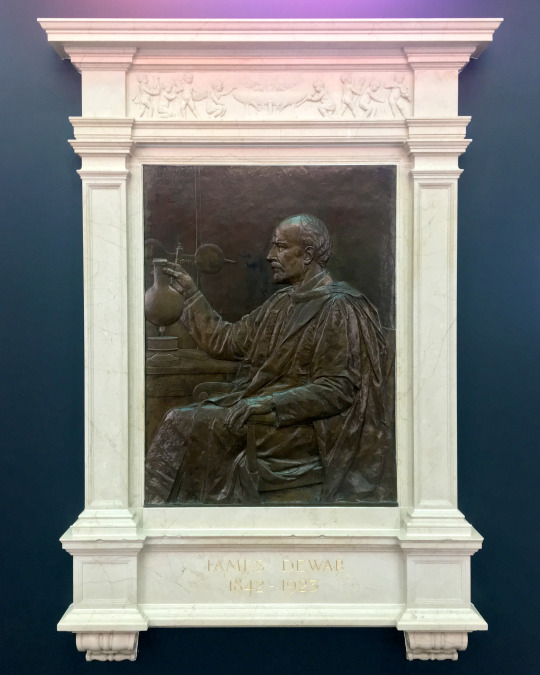
What a guy. Happy Birthday James Dewar
Post link
Michael Faraday achieved electromagnetic induction here at the Ri for the first time #OnThisDay in 1831
His work revolutionised our understanding of electricity and led to the development of electric generators, motors, inductors & transformers ⚡️

Electromagnetic induction is the production of an electromotive force (voltage) across an electrical conductor in a changing magnetic field.

You can find his electromagnetic induction ring and notes within our Museum and archival collection!

If beautifully scrawling handwriting ain’t your thing, read the transcription of Faraday’s notes here.
Post link
Big news!
The 2018 CHRISTMAS LECTURES will be presented by Alice Roberts, biological anthropologist, broadcaster and Professor of Public Engagement in Science at the University of Birmingham.

We’re 99.4% the same as the next person yet 100% unique. In ‘Who am I?’, Alice will take us on a fascinating journey to answer this fundamental question of life.
Click here for the whole story so far: http://www.rigb.org//christmas-lectures/2018-who-am-i?utm_source=tumblr&utm_medium=social
Post link
If you’ve ever wondered who to thank for your ice cold drink on a hot Summer’s day, it’s this legend: James Dewar. Dewar invented the flask that many of us use daily.
Dewar never patented his invention of the flask. Instead, it was later patented and renamed by 2 German glass blowers, who set up the Thermos company, giving the Dewar flask its common name - the Thermos! *Dewar shakes fist*

The Dewar flask works by placing a smaller flask within a larger one, and sealing them at the neck. Between the 2 vessels is a gap which has had almost all of the air sucked out to create a near-vacuum.
This vacuum reduces heat transfer between the drink inside your flask, and outside world, be it hot or cold. This is because there are too few particles in the vacuum for heat energy to transfer through it by conduction or convection currents.
☕️
Post link
A lion cub and a room full of children - what could possibly go wrong? This photo is from Julian Huxley’s 1937 Christmas Lectures ‘Rare Animals and the Disappearance of Wild Life’

Julian Huxley was born on this day in 1887. A passion for evolutionary biology clearly ran in the family - he was the grandson of Thomas Henry Huxley, AKA ‘Darwin’s Bulldog’ for his staunch and loyal support of Darwin’s theory of evolution by natural selection.
Post link
We’ve just uploaded a new archive Christmas Lectures series to the website! Click here to watch all 6 lectures of Prof RV Jones’ series ‘From Magna Carta to microchip’.

Delivered in 1981, ‘From Magna Carta to microchip’ is devoted to the importance of measurement. Charting through number systems, binary, time and space…

Measuring at the grandest and microscopic scales, RV Jones explores how our human obsession with measuring things has changed the way we think about the Universe.

RV Jones also explores his wartime work as a scientific military intelligence expert, looking at how precise navigation is needed in the air, on land, sea, and nowadays, in space.

This rare series hasn’t been seen publicly since its broadcast in 1981. Watch it for the first time in 37 years on rigb.org
Post link
A magic lantern slide from c.1850 showing the size of the sun in the sky, as viewed from different planets in our solar system
Click here to learn how this slide and others in our collection were used to bring astronomy presentations to life at the Royal Institution
#sun#sunny#solar#astronomy#archive #magic#lantern
Post link
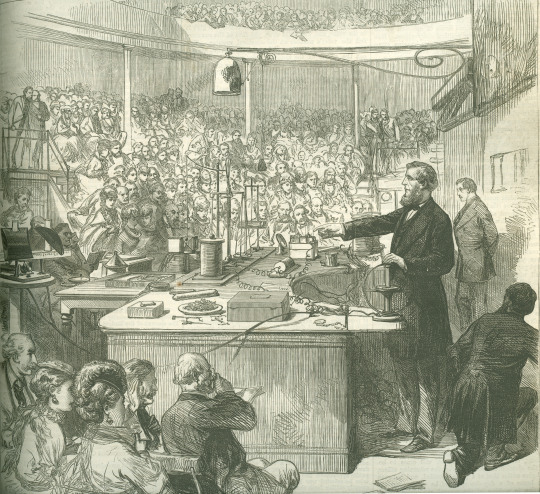
The history of climate science goes back a long way. In 1859, spurred by his work on glaciers, John Tyndall discovered how gases absorb heat by developing and experimenting with extremely sensitive equipment called the ‘radiant heat apparatus’.
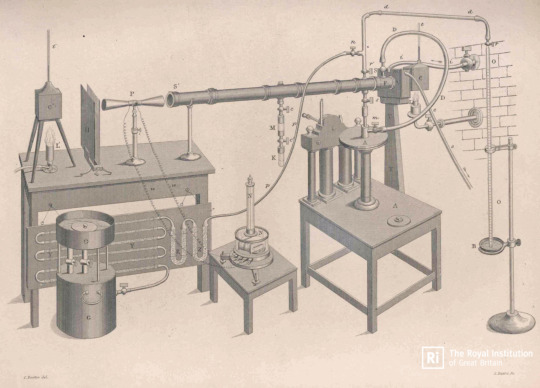
Knowing how different gases absorb heat to different degrees helped scientists later understand how heat is trapped by the Earth’s atmosphere - what we now call the greenhouse effect.
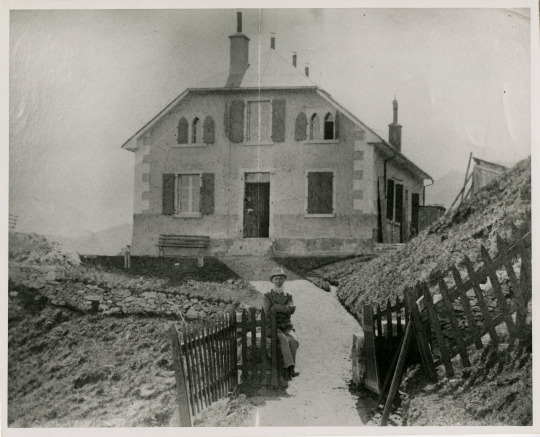
As a glaciologist and physicist Tyndall spent a lot of his time hanging out on mountains. Here he is outside the house he had built up Belalp in Switzerland, with his wife Louisa peeking through the front door.
If you’re in the USA, tune in to Nova on PBS tonight at 8pm to catch Andrea Sella recreate Tyndall’s radiant heat experiments, right here at the Royal Institution where he first made his breakthrough.
It’s our Birthday!
On this day in 1799 (219 years ago) the Royal Institution of Great Britain was founded. 219 is a happy number, so it’s an especially Happy Birthday for us



